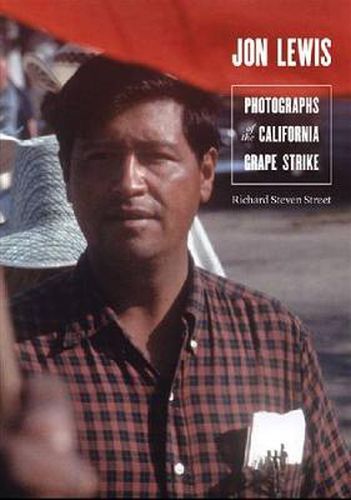Readings Newsletter
Become a Readings Member to make your shopping experience even easier.
Sign in or sign up for free!
You’re not far away from qualifying for FREE standard shipping within Australia
You’ve qualified for FREE standard shipping within Australia
The cart is loading…






Before the film, Cesar Chavez, Chavez’s life was depicted in photographs by his confidant, Jon Lewis.
In the winter of 1966, twenty-eight-year-old ex-marine Jon Lewis visited Delano, California, the center of the California grape strike. He thought he might stay awhile, then resume studying photography at San Francisco State University. He stayed for two years, becoming the United Farm Workers Union’s semiofficial photographer and a close confidant of farmworker leader Cesar Chavez.
Surviving on a picket’s wage of five dollars a week, Lewis photographed twenty-four hours a day and created an insider’s view of the historic and sometimes violent confrontations, mass marches, fasts, picket lines, and boycotts that forced the table-grape industry to sign the first contracts with a farm workers union. Though some of his images were published contemporaneously, most remained unseen. Historian and photographer Richard Steven Street rescues Lewis from obscurity, allowing us for the first time to see a pivotal moment in civil rights history through the lens of a passionate photographer.
A masterpiece of social documentary, this work is at once the biography of a photographer, an expose of poverty and injustice, and a celebration of the human spirit.
$9.00 standard shipping within Australia
FREE standard shipping within Australia for orders over $100.00
Express & International shipping calculated at checkout
Before the film, Cesar Chavez, Chavez’s life was depicted in photographs by his confidant, Jon Lewis.
In the winter of 1966, twenty-eight-year-old ex-marine Jon Lewis visited Delano, California, the center of the California grape strike. He thought he might stay awhile, then resume studying photography at San Francisco State University. He stayed for two years, becoming the United Farm Workers Union’s semiofficial photographer and a close confidant of farmworker leader Cesar Chavez.
Surviving on a picket’s wage of five dollars a week, Lewis photographed twenty-four hours a day and created an insider’s view of the historic and sometimes violent confrontations, mass marches, fasts, picket lines, and boycotts that forced the table-grape industry to sign the first contracts with a farm workers union. Though some of his images were published contemporaneously, most remained unseen. Historian and photographer Richard Steven Street rescues Lewis from obscurity, allowing us for the first time to see a pivotal moment in civil rights history through the lens of a passionate photographer.
A masterpiece of social documentary, this work is at once the biography of a photographer, an expose of poverty and injustice, and a celebration of the human spirit.